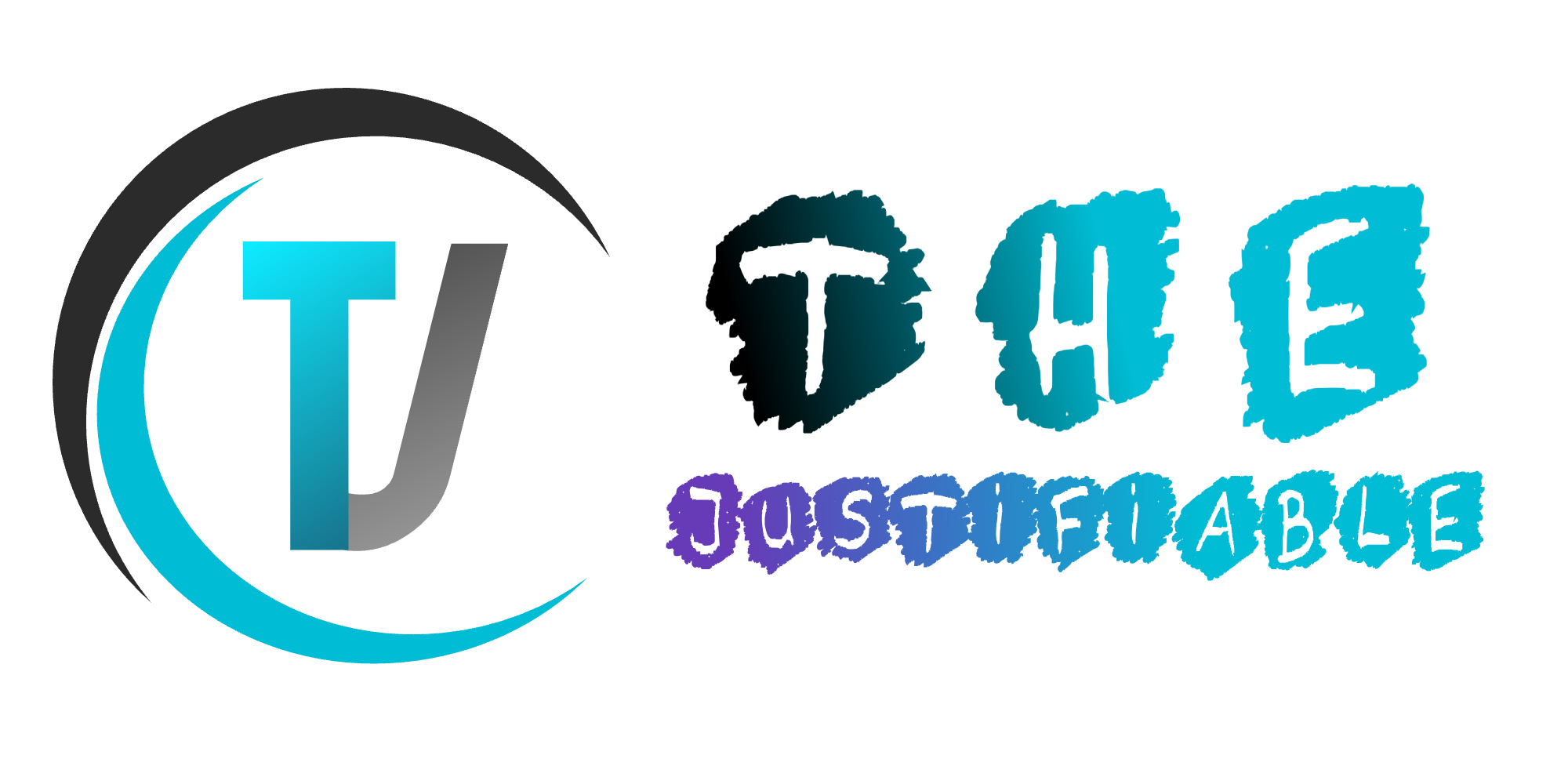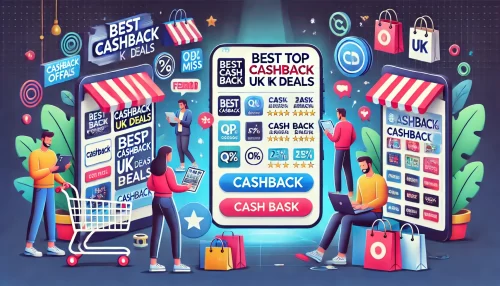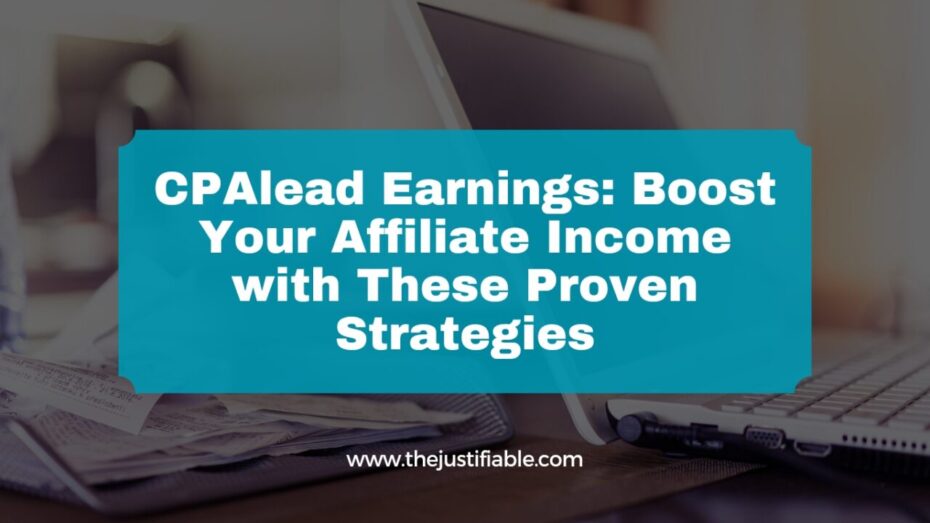Table of Contents
Wondering about the best way to monetize a blog for passive income without burning yourself out creating content every day? You’re not alone. Whether you’re just starting out or trying to turn your existing traffic into steady cash flow, figuring out how to make your blog work for you while you sleep is the dream.
Should you lean into affiliate marketing or go all-in on digital products? Is advertising still worth it—or are there better options out there? How do some bloggers seem to earn consistently without constantly promoting? We’re diving into all of that.
Let me walk you through proven, scalable strategies that don’t just bring in money once—but keep it coming month after month.
Choose Evergreen Topics That Attract Long-Term Traffic
If you’re looking for the best way to monetize a blog for passive income, it starts with choosing the right topics—specifically, evergreen content. These are the kinds of posts that keep getting traffic months or even years after they’re published.
Identify Niches With Consistent Search Demand
Blogging about seasonal trends or short-lived news might get you a temporary spike in traffic, but it won’t help you build passive income. Evergreen niches like personal finance, parenting, wellness, travel tips, and digital marketing tend to hold steady in search volume.
Here’s how to find niches that are built to last:
- Use Google Trends to check if the topic has had consistent interest over the past 2–3 years.
- Search on Reddit or niche forums to see what questions come up again and again.
- Look at top-performing evergreen blogs like NerdWallet (finance) or The Points Guy (travel) to get a sense of what topics perform well long-term.
From what I’ve seen, if your niche solves an ongoing problem or helps people make better decisions, it has long-term potential.
Use Keyword Research to Validate Passive Potential
Once you’ve locked in a niche, you’ll need proof that the content can rank and stay relevant. Keyword research is where that comes in.
Let me break it down for you:
- Use Ahrefs, Ubersuggest, or LowFruits to search for keywords with consistent monthly traffic.
- Look for “low competition + high intent” keywords that fit your niche.
- Prioritize informational queries with affiliate or ad monetization potential. For example, “best budgeting apps for couples” is a low-competition keyword that matches evergreen search intent.
The goal is to find search terms people will keep using—whether it’s next month or two years from now.
Focus on Content That Solves Recurring Problems
Passive income flows from content that continues to help people solve a problem they’re actively searching for. It’s not about creating once-off listicles—it’s about creating solutions.
Ask yourself:
- What do people in this niche keep struggling with?
- Can I offer a step-by-step guide or resource that helps them without needing regular updates?
Examples of this type of content include:
- “How to Create a Monthly Budget That Works”
- “Beginner’s Guide to SEO-Friendly Blog Posts”
- “Best Tools for Freelancers to Save Time”
All of these are problem-solvers that hold value over time.
Create Content Funnels That Don’t Expire Over Time
A blog post shouldn’t just be a dead end—it should guide readers toward more value (and monetization).
Here’s what I recommend:
- Connect posts together with a content funnel structure. Start with a general topic and link to more specific, high-converting posts.
- Set up email opt-ins within your posts that lead to an automated product pitch or affiliate offer.
- Make use of evergreen lead magnets like checklists or mini-courses that connect back to your income strategy.
Think of your blog as a web of timeless content, all leading readers deeper into your value system—without you having to be present.
Build SEO Foundations That Drive Ongoing Traffic

Evergreen topics only work if people can actually find them—and that’s where strong SEO comes in. Building a solid foundation makes it easier for your content to rank now and in the future.
Optimize Blog Posts for Search Intent, Not Just Keywords
Search engines have gotten smarter. You’re no longer just writing to include a keyword—you’re writing to answer the intent behind the search.
Here’s how I approach it:
- Start with the keyword, but ask what the reader really wants to know. Someone searching “best email marketing platforms” probably wants a comparison, pricing breakdown, and pros/cons—not just a list.
- Break content into sections that align with that reader journey. Answer all related sub-questions in one post so they don’t bounce to another blog.
- Use H2s and H3s to structure for scannability. It helps with SEO and makes your post easier to consume.
The clearer your answer, the better your ranking and conversions.
Update Old Content to Sustain Rankings and Traffic
Even the best evergreen content can fade over time if it’s not maintained. I suggest setting a reminder to review and update your top 10 traffic-generating posts every 6–12 months.
When updating:
- Refresh outdated stats, broken links, or old screenshots.
- Add new tools or strategies that have emerged in your niche.
- Resubmit the updated URL to Google Search Console to encourage faster reindexing.
A case study by Backlinko showed that updating content increased organic traffic by over 30%. That’s a small effort for a big return.
Use Internal Linking to Keep Readers on the Site
Internal linking is one of the most underrated SEO strategies. It boosts time-on-page, lowers bounce rates, and helps Google crawl your site more effectively.
Some practical ways to do this:
- Link new posts to older high-traffic posts and vice versa.
- Use descriptive anchor text that tells both readers and search engines what to expect.
- Include related posts in your content funnel (as mentioned earlier) to drive readers toward monetized content.
From what I’ve tested, well-placed internal links often outperform sidebar widgets or random “related posts” plugins.
Leverage Long-Tail Keywords With Monetizable Intent
Ranking for a keyword like “blogging” sounds great—but it’s incredibly competitive and vague. Long-tail keywords, on the other hand, are specific, lower in competition, and usually signal higher intent.
Here’s how to find and use them:
- Tools like AnswerThePublic or Google’s People Also Ask box reveal natural, long-tail phrases.
- Look for keywords with modifiers like “best,” “how to,” “for beginners,” or “review” that tie into a product or service.
- Target phrases like “best free SEO tools for bloggers” or “how to make passive income with a blog in 2025.” These are clear, specific, and easier to rank for.
Long-tail traffic may be smaller, but it often converts much better. And once you’re ranking, it can generate revenue with little ongoing effort.
Expert Tip: To really lock in your SEO strategy, I suggest setting up a simple tracking dashboard with Google Analytics and Search Console. Track keyword rankings, click-through rates, and top-converting posts. Over time, you’ll learn what kinds of content consistently perform—and that’s where your passive income grows.
Implement Affiliate Marketing With High-Payout Programs
If you’re aiming for the best way to monetize a blog passively, affiliate marketing is one of the most reliable paths. When done right, it lets you earn money from products you don’t need to create or support—just recommend them honestly and strategically.
Choose Products With Recurring Commissions
One-time commissions are great, but recurring ones? That’s where things really get passive. These are typically software tools, membership platforms, or services that charge customers monthly or annually—and share a cut with you for the life of the customer.
Here’s why they work so well:
- You earn over and over again from one referral.
- It builds income compounding over time.
- Churn (customer cancellation) rates are usually low with quality products.
For example, ConvertKit offers a 30% recurring commission, and SEO tool Surfer pays monthly as long as your referral stays on. If you refer just 50 customers over time, that recurring base can add up to thousands annually—without lifting a finger after the original post.
Write Product Reviews That Rank and Convert
I’ve seen way too many affiliate blog posts that try to sell without actually helping. That usually backfires. Your goal should be to create reviews that rank well and genuinely help readers decide if the product is right for them.
To write a review that performs well:
- Use the full product name in the title (e.g., “Notion AI Review: Is It Worth It?”).
- Include personal use cases or demos to stand out from generic reviews.
- Compare the product with alternatives (“Mailerlite vs Aweber”)—these searches often signal high purchase intent.
- Answer real buyer questions: pricing, pros and cons, who it’s best for, and honest limitations.
When possible, use schema markup to help your review appear in rich results. This boosts visibility and click-through rates.
Use Affiliate Disclosure Smartly to Build Trust
Transparency builds loyalty, and loyal readers are more likely to click and buy through your links. An FTC-compliant disclosure is required, but it can also be used to strengthen trust if done with care.
Instead of hiding your disclosure in the footer, try something like:
“This post contains affiliate links, which means I may earn a commission if you click and buy. I only recommend tools I use and trust.”
It’s honest, upfront, and doesn’t disrupt the flow of content. Readers appreciate clarity—and that usually leads to higher conversions.
Track Clicks and Optimize Based on Performance
One thing I learned the hard way: if you don’t track your affiliate links, you’re flying blind. Knowing which posts, buttons, and products are generating clicks and sales is essential.
What I use:
- Pretty Links or ThirstyAffiliates (WordPress plugins) to cloak and track links easily.
- Awin or PartnerStack for detailed commission reporting if you’re using SaaS affiliate programs.
- Google Analytics event tracking for deeper behavioral insights (like scroll depth or button clicks).
Look for patterns: which posts convert the best? Which call-to-action is working? Sometimes tweaking the placement of a link or adding a button instead of plain text can double your conversions.
Here’s a quick comparison chart from a personal test I ran:
| CTA Type | Click-Through Rate | Conversion Rate |
| In-text link | 2.1% | 1.3% |
| Button (mid-post) | 4.7% | 3.5% |
| Comparison table | 6.2% | 4.8% |
As you can see, the format matters. Testing small changes leads to better results over time—and that’s how passive income becomes scalable.
Add Display Ads Using the Right Ad Network
Display ads are one of the most classic ways to earn passive income from a blog. But the key to making it worthwhile is choosing the right network and optimizing for both earnings and user experience.
Choose Networks Like Mediavine or Raptive for High RPMs
Not all ad networks pay equally. While Google AdSense is easy to set up, its payouts are usually much lower than premium networks.
Here’s a quick comparison of average RPMs (revenue per 1,000 views):
| Ad Network | Average RPM Range |
| Google AdSense | $2–$6 |
| Adsterra | $15–$35 |
| Raptive (formerly AdThrive) | $20–$40 |
If you’ve got at least 50,000 monthly sessions, Adsterra and Raptive are worth applying for. Their advanced targeting and high-quality advertisers usually mean more earnings per view.
What I like most about these networks is that they optimize ad placement for you, so you don’t need to manage it manually once things are live.
Optimize Layout and User Experience for Ad Revenue
You don’t need to drown your site in ads to make decent money. In fact, cramming in too many ads often backfires by slowing down your site or annoying readers.
Instead, consider:
- Placing ads after the first few paragraphs (visible but not disruptive).
- Allowing sticky sidebar or footer ads—these tend to have higher engagement.
- Testing ad frequency: fewer, well-placed ads often outperform aggressive setups.
From what I’ve tested, balancing monetization with user experience leads to longer session times, more return visitors, and better SEO signals overall.
Scale With Traffic, Not Time Spent
The beautiful thing about display ads is that your earnings scale with your traffic—not your effort. That makes it a great fit for passive income.
Let’s say you’re averaging 50,000 pageviews per month with an RPM of $25. That’s:
50,000 ÷ 1,000 × $25 = $1,250 per month
That’s without any product to manage, customer support to handle, or emails to write.
Now imagine hitting 200,000 monthly views—that income grows without any extra writing on your part. This is why SEO and evergreen content are so important: they keep traffic flowing steadily.
Avoid Overloading Pages to Preserve Speed and UX
A big mistake I see is bloggers sacrificing performance for just a few more ad impressions. That hurts SEO, reader satisfaction, and ultimately, long-term revenue.
What you can do:
- Run a PageSpeed Insights test regularly and aim for scores above 85.
- Limit the number of ads above the fold to improve content visibility.
- Use lightweight themes and delay-loading scripts to reduce load time.
Mediavine and Raptive both offer site audits to help with speed issues. Take them up on that—it makes a noticeable difference in bounce rate and ad revenue.
Pro Tip: If you’re just starting out and don’t yet qualify for a premium network, consider Ezoic as a stepping stone. It offers better RPMs than AdSense and a growth path toward bigger networks as your traffic grows. Just make sure to monitor site speed and ad layout settings carefully—they can get aggressive by default.
Create and Sell Digital Products With Low Overhead

If you’re looking for the best way to monetize a blog without taking on a lot of extra work or expenses, digital products are a great option. They take effort upfront but can pay off for years with minimal maintenance.
Identify Simple Products That Solve a Clear Problem
The most successful digital products don’t try to do everything—they solve one specific issue really well. The more focused the solution, the easier it is to market and sell.
Here are a few low-overhead ideas:
- Printable planners or trackers
- Niche-specific templates (like blog post outlines or social media calendars)
- Mini-courses or video tutorials
- Checklists, guides, or digital toolkits
Start by paying attention to the questions your readers ask most often. If multiple people struggle with something, there’s likely a product opportunity in it.
From what I’ve seen, the most effective products often come from solving your own past problems. It makes your offer more relatable and easier to build trust around.
Use Sales Funnels and Landing Pages to Sell Passively
A sales funnel doesn’t have to be complicated—it just needs to guide readers from interest to purchase, even while you’re offline.
You can set this up in a few simple steps:
- Create a landing page using platforms like Leadpages or ConvertKit.
- Offer a freebie (like a checklist) in exchange for an email address.
- Automate a short email series that leads into your product offer.
Your blog post brings in traffic, the landing page captures leads, and the funnel does the selling. That’s how it turns into passive income.
Automate Delivery With Tools Like Gumroad or Podia
Once someone makes a purchase, you want the product delivered without you having to lift a finger. This is where tools like Gumroad, Podia, or SendOwl come in.
Here’s what they handle for you:
- Secure product delivery
- Payment processing
- Automatic receipt generation
- Simple customer management
I personally like Gumroad for smaller products and Podia for bundles or courses. Both are beginner-friendly and integrate easily with most blogs.
Price Strategically to Balance Volume and Value
Pricing can feel tricky—too low, and you leave money on the table; too high, and you scare people off. The sweet spot usually depends on your audience and the type of product.
A few things to consider:
- For ebooks or templates: $9–$29 works well.
- For mini-courses or toolkits: $49–$99 is a strong range.
- Consider a “tripwire” offer (a lower-priced product) to convert new leads.
You can always test different price points. Some bloggers even A/B test landing pages to see what pricing drives more conversions or total revenue.
Build an Email List That Sells While You Sleep
An email list gives you control over your audience and the ability to generate income even when blog traffic is slow. It’s hands-down one of the most valuable assets for passive monetization.
Use Lead Magnets That Align With Your Monetization Path
A lead magnet is just a free resource that solves a quick problem in exchange for an email address. But for it to be effective, it needs to directly tie into what you plan to sell.
Examples:
- Offering a “30-Day Blog Planner” that leads into a paid blogging course
- Giving away a “Freelance Pitch Template” that connects to a toolkit or affiliate service
- Sharing a “Passive Income Checklist” that transitions into digital product offers
If your lead magnet feels disconnected from your paid product, conversions will drop. Keep it tightly aligned.
Create Automated Sequences With Strategic Offers
Email automation lets you nurture subscribers without needing to send individual messages. With the right sequence, you can build trust and sell passively.
Here’s a simple structure I’ve used:
- Welcome email: Set expectations and share your story.
- Value email: Deliver your lead magnet and give helpful content.
- Authority email: Share a quick win or case study.
- Offer email: Introduce your product or affiliate recommendation.
- Reminder email: Nudge them with urgency or testimonials.
You can set this up once in tools like Moosend, MailerLite, or ActiveCampaign—and it runs automatically for every new subscriber.
Segment Subscribers for Higher Engagement and Conversions
Not all subscribers are at the same stage or have the same needs. By segmenting your list, you can send more relevant emails—and that usually leads to higher click-throughs and conversions.
Ways to segment:
- Based on the lead magnet they downloaded
- Activity (clicked on links, opened past emails)
- Interests they self-identify in a welcome survey
For example, someone who downloaded a “Start a Blog Checklist” might get an affiliate-focused email sequence, while someone who bought a product might get upsell offers or advanced tips.
Promote Affiliate Links, Products, or Ad-Paid Content
Email doesn’t just help you sell your own stuff—it can also drive traffic to affiliate content or ad-monetized blog posts.
A few options:
- Add affiliate links to valuable tips or roundups in your newsletter.
- Share blog content with a note about why it’s helpful.
- Include product mentions in PS lines or signature areas subtly.
From what I’ve seen, email click-throughs often outperform social media when it comes to affiliate earnings. And the best part? You’re not at the mercy of algorithms.
Set Up Sponsored Content That Pays Over Time
Sponsored content is often seen as a one-time deal, but with the right approach, it can bring in revenue long after the post goes live. The key is pitching strategically and building long-term value.
Pitch Evergreen Content Ideas to Sponsors
Most brands want exposure—but you can stand out by pitching content that keeps getting traffic.
Instead of offering a single mention, pitch an evergreen post idea like:
- “Top Tools for Remote Writers in 2025” (sponsored by a writing software company)
- “Freelance Budgeting Toolkit” (sponsored by a finance app)
- “Best Online Course Platforms Reviewed” (with sponsored placement)
You can highlight that the post is optimized for SEO and will be promoted through your email funnel and social shares. That shows the brand it’s not a one-time view.
Use Existing Traffic Metrics to Justify Higher Rates
If you’ve got solid blog stats—use them. Brands want to see numbers.
Share metrics like:
- Monthly unique visitors
- Average time on page
- Social shares or engagement
- Email list size and open rates (if relevant)
You don’t need huge numbers, either. Niche blogs with engaged audiences often command higher rates than generic ones with big but unfocused traffic.
I suggest including screenshots from Google Analytics or Search Console in your pitch deck to build credibility.
Include Sponsored Content in Automated Email Workflows
Here’s where things get interesting. You can actually plug sponsored posts into your email automation sequence—just like you would with an affiliate or your own product.
For example:
- In Email #3 of your funnel, link to a sponsored guide with a short intro.
- Mention the sponsor naturally, as part of the value you’re delivering.
It’s subtle but powerful. The sponsor gets long-term exposure, and you get paid upfront.
Repurpose Paid Posts Into Affiliate or Product Funnels
Sponsored posts shouldn’t just sit there. You can extend their value by:
- Adding affiliate links to complementary products
- Using the post as a lead magnet for a related product
- Turning part of the post into a downloadable PDF or bonus resource
Think of every paid post as a long-term asset. If it’s well-optimized, it can rank in search, convert affiliate clicks, and feed your email funnel—long after the original deal is done.
Expert Insight: According to a study by Influence.co, the average sponsored blog post pays between $200–$750. But when positioned as evergreen SEO content with lead generation and email automation built in, I’ve seen creators command $1,500 or more per post—especially in high-value niches like finance, software, or education. That’s a powerful way to build passive revenue with fewer sponsorships.
Repurpose Blog Content Into Passive Video Revenue
If you’re already creating helpful blog content, turning it into video can open up a whole new passive income stream. You don’t need to start from scratch—just adapt what you’ve already built.
Turn Blog Posts Into YouTube Videos With Affiliate Links
A well-performing blog post can become a high-ranking YouTube video with minimal effort. It doesn’t have to be flashy or scripted like a Hollywood production—just clear, helpful, and personal.
Start with:
- Tutorial-style videos that break down the same points in your blog.
- Talking-head explanations or narrated slideshows.
- Screen recordings for walkthroughs or tool comparisons.
Embed affiliate links in your video description and mention them naturally in the video. For example, “I’ll drop a link below if you want to try this tool—it’s the one I use myself.”
This keeps your blog’s monetization model working even on video platforms.
Use YouTube Ad Revenue as a Supplementary Stream
Once you hit YouTube’s monetization threshold (1,000 subscribers and 4,000 watch hours), you can enable ads through the YouTube Partner Program.
While this isn’t typically a huge income stream for most niche bloggers, it adds up over time. For example:
| Niche | Avg. RPM (Revenue Per 1,000 Views) |
| Personal Finance | $12–$20 |
| Tech Reviews | $7–$14 |
| DIY & Craft | $4–$9 |
| Blogging/Marketing | $10–$18 |
These numbers can fluctuate, but once your videos start ranking and pulling views from search, the earnings require zero ongoing effort.
Optimize Video Descriptions for Search and Monetization
Your video description is where a lot of the monetization happens. It’s also a powerful tool for SEO, both within YouTube and on Google.
Use your description to:
- Include a short video summary that naturally uses your target keywords.
- Add affiliate or product links near the top so they’re visible without clicking “more.”
- Link back to the original blog post for extra traffic and content depth.
- Include timestamps for usability (YouTube loves this for ranking).
YouTube also lets you add hashtags and tags—use them to describe your video’s topic and intent without stuffing.
Drive Traffic From YouTube Back to High-Earning Posts
Your YouTube channel can become a reliable source of blog traffic, especially for monetized posts. Add your blog URL in your channel banner, about section, and inside video descriptions.
You can also:
- Mention the blog post directly in the video: “If you want the full guide with step-by-step screenshots, check out the link below.”
- Use YouTube cards and end screens to link to relevant blog topics.
- Embed YouTube videos into the blog post itself to increase session duration and engagement.
This creates a traffic loop—video feeds your blog, blog feeds your email list or product funnel—and it all runs passively once the content is live.
Offer Paid Memberships or Premium Content Access

Another powerful way to build consistent passive income is through memberships. Once the system is set up, it can run with minimal input while generating recurring revenue.
Use Gated Content Models That Require Minimal Upkeep
Not all content needs to be free. Gating valuable guides, tutorials, or exclusive updates behind a paywall can work really well, especially if your readers already trust your content.
Popular gated content ideas:
- A private blog post archive or library of templates
- Early access to new posts or downloadable tools
- Member-only podcast episodes or Q&A sessions
Set it up once, and members get ongoing access with little need for daily updates.
Provide Ongoing Value Without Daily Involvement
To keep members subscribed, focus on value that feels active—without needing you to show up every day.
Here’s what I suggest:
- Pre-schedule monthly updates or content drops (even batching 3 months ahead)
- Create a searchable archive that grows over time
- Build community features (like a forum or comments section) that let members support each other
Think of it like building a self-sustaining ecosystem. You spark the initial value, then structure it so the platform works on its own.
Choose the Right Platform: Patreon, Ghost, or Memberful
Different platforms serve different styles of membership models.
- Patreon: Best for creators who want to offer tiered perks like shoutouts, content drops, or behind-the-scenes posts.
- Ghost: Great for bloggers and writers who want to keep control of their site and host gated posts natively.
- Memberful: Works with WordPress and lets you create multiple membership levels with ease.
Whichever you choose, make sure the experience feels seamless—sign-up, access, and billing should all be smooth and low-friction.
Test Tiered Pricing Models for Maximum ROI
Not everyone wants the same level of access. Offering different tiers lets readers choose how much they want to invest—while giving you a chance to earn more from your superfans.
Sample structure:
- $5/month: Basic access (monthly updates, behind-the-scenes)
- $15/month: Premium content + tools/templates
- $30/month: Full access + group coaching or private chat
You can always test different combinations or run a launch promo to get early signups. Just be clear about what each level includes and why it’s worth it.
Use Automation Tools to Scale Without Burnout
One of the biggest threats to consistent monetization is burnout. Automating the right tasks lets you focus on what matters—and gives you more time to rest or create new value.
Automate Social Sharing With Tools Like Missinglettr
Sharing your posts manually across multiple platforms is time-consuming and easy to forget. Missinglettr creates an entire year’s worth of drip campaigns from just one blog post.
Here’s how it helps:
- Schedules branded posts on Twitter, LinkedIn, Facebook, and others
- Auto-pulls quotes or excerpts from your content
- Lets you approve the content in one click
This keeps traffic coming in steadily without you needing to show up every day.
Schedule Emails, Posts, and Updates in Batches
Batching content creation and scheduling frees you from the pressure of publishing on the fly. Whether it’s blog posts, emails, or social updates, try setting aside one day per week to prep everything in advance.
Tools to help:
- Aweber or MailerLite for email sequences and weekly newsletters
- WordPress scheduler to plan content drops
- Notion or Trello to manage your editorial calendar
This approach not only saves time—it improves content quality because you’re working in a focused mindset.
Outsource Repetitive Tasks Without Losing Quality
If certain tasks are eating up your time and energy (editing videos, formatting posts, designing pins), you can outsource them without sacrificing your brand.
Start small:
- Hire a VA for formatting, uploading, or email cleanup
- Use Fiverr or Upwork for one-off design or editing jobs
- Set SOPs (Standard Operating Procedures) to make hand-offs smoother
From what I’ve seen, outsourcing even 5–10 hours a month can free you up to focus on high-impact strategies like product creation or SEO.
Monitor Performance Metrics Without Manual Reporting
Tracking your blog’s performance is important—but pulling numbers manually isn’t the best use of your time. Instead, use tools that auto-generate reports you can review in minutes.
Options to try:
- Google Data Studio dashboards connected to Analytics and Search Console
- Fathom Analytics for clean, privacy-friendly reporting
- ConvertKit analytics to track email open rates and sales funnel performance
By setting up automated dashboards, you can quickly spot what’s working and what’s not—without diving into spreadsheets.
Quick Insight: Scaling passively doesn’t mean losing control. With the right systems, tools, and a bit of upfront effort, your blog can start earning even while you’re away from your desk. These strategies are all about working smarter—not harder.






